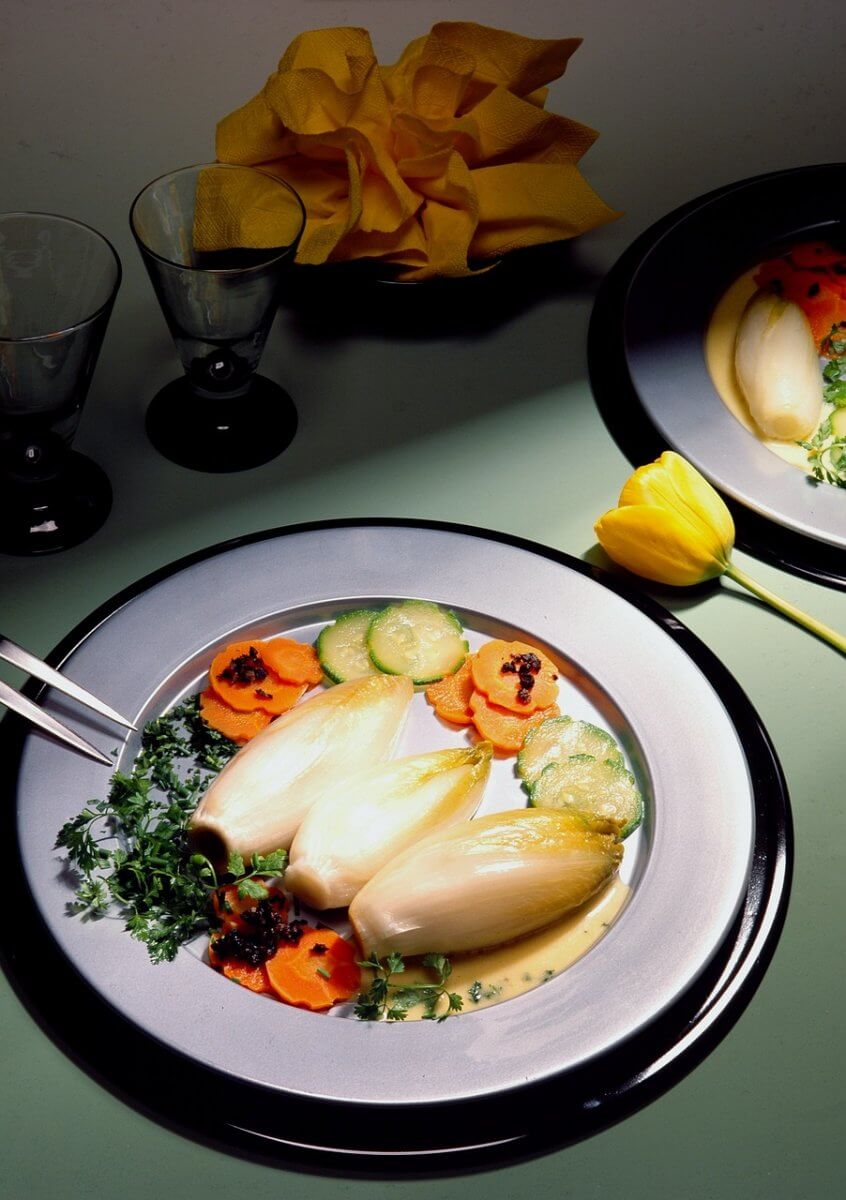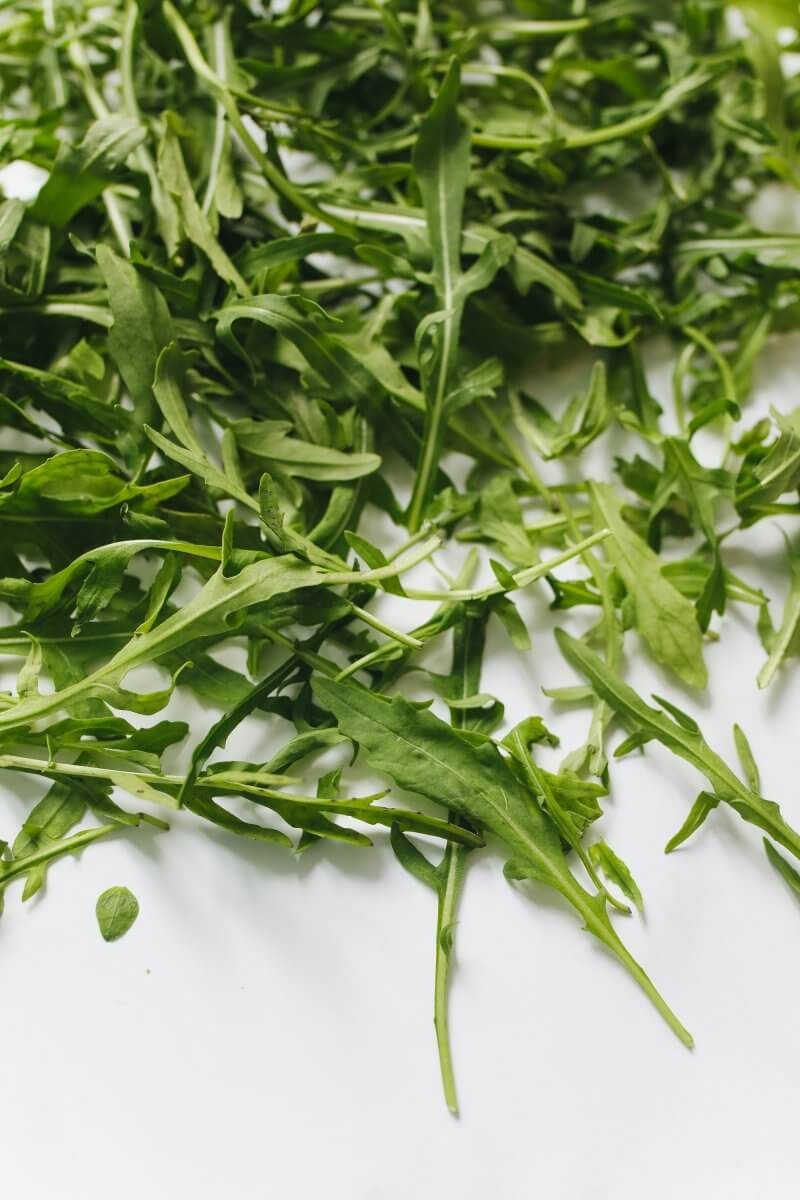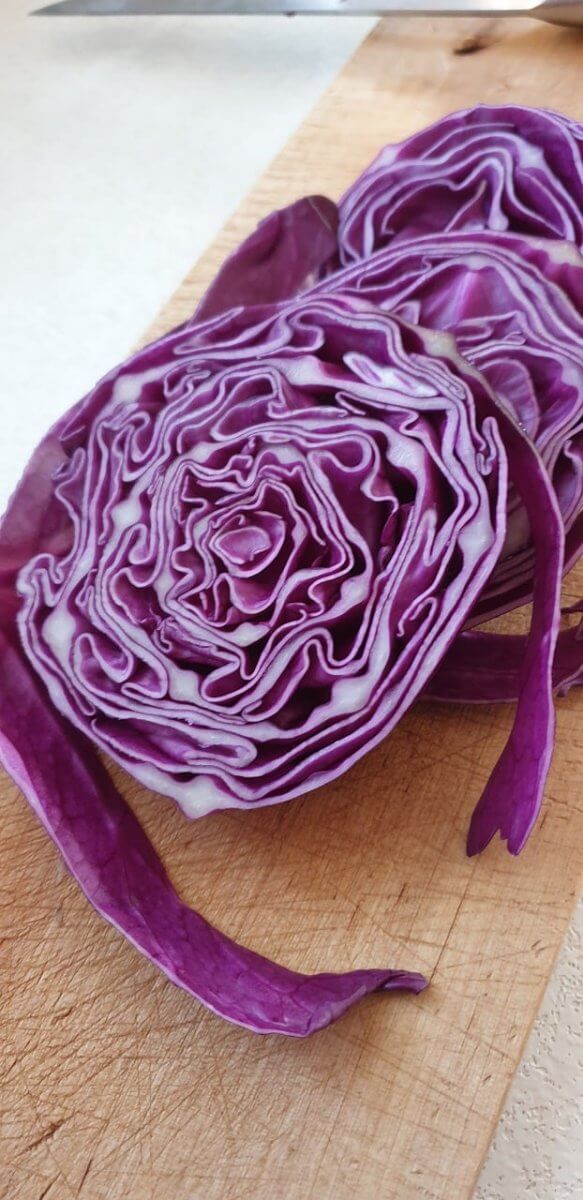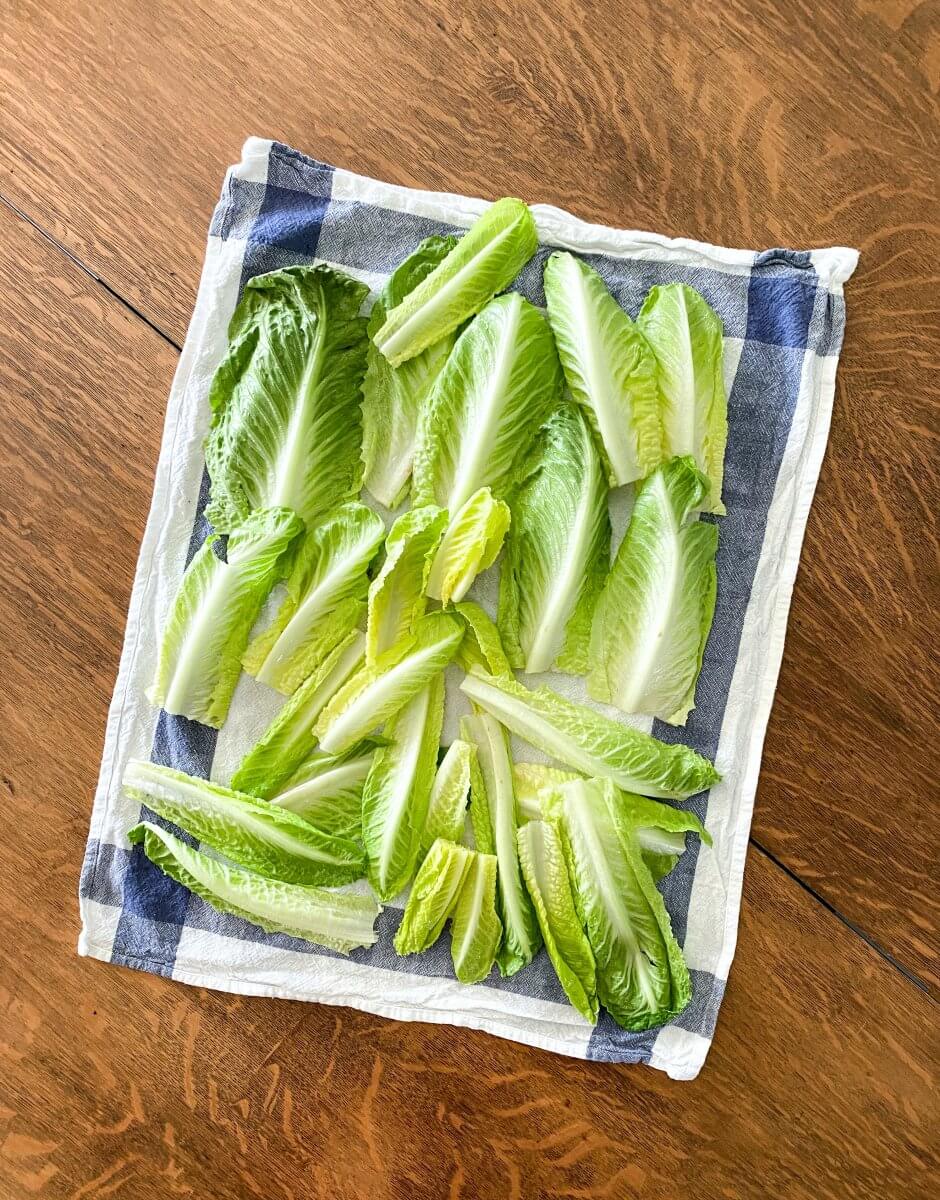What is the best substitute for Radicchio
Are you looking for a radicchio substitute? Do you want to add a touch of elegance and a burst of flavor to your culinary creations? Look no further than the world of radicchio! This vibrant leafy vegetable, hailing from the chicory family, is a must-have ingredient for those seeking to elevate their dishes to new heights. However, if you’re unable to get your hands on radicchio, fear not! We’ve got you covered with a selection of the finest radicchio substitutes. Try using, Endive (Chicory), Arugula (Rocket), Mixed Greens, Red Cabbage, Swiss Chard, Romaine Lettuce.
What is Radicchio
Radicchio is a type of leafy vegetable that belongs to the chicory family. It has a distinctive bitter taste and vibrant reddish-purple color. Radicchio is commonly used raw in salads . But it can also be cooked or grilled to mellow out its bitterness and bring out its sweetness. It has a crisp texture and is often used to add a unique flavor and color to dishes.
Radicchio leaves are characterized by their tight, compact heads and their deep red to purple color. Some varieties do have lighter colors. The bitterness of radicchio comes from compounds called polyphenols. These can vary in intensity depending on the variety and growing conditions.
There are different varieties of radicchio, each with its own characteristics. Some popular types of radicchio include:
- Chioggia: This is a round radicchio with white-veined leaves and a milder bitterness compared to other varieties.
- Treviso: Treviso radicchio has elongated leaves and a slightly milder flavor. Use it in both raw salads and cooked dishes.
- Castelfranco: Castelfranco radicchio is known for its pale green leaves with red speckles. It has a delicate flavor and is often used in salads.
- Rossa di Verona: This type of radicchio has large, round heads and a deep red color. It has a strong bitterness and is often used in cooked dishes to balance out the flavors.
Radicchio is popular in Italian cuisine, especially in salads and as a grilling or roasting ingredient. Its bitterness can be an acquired taste, but it adds a unique element to dishes when used appropriately.
Okay, before we look at your radicchio substitute options, let’s deal with that empty cupboard situation!
Where can I buy Radicchio?
If you want to be more prepared and ensure you don’t run out of radicchio then you should stock up now.
Nowadays most general supermarkets stock a wide variety of radicchio, but we thought you might like to try growing your own.
So why not jump on and place your order today.
STOCK UP NOW!
Radicchio Seeds – Palla Rosa variety
Produces a nice tight head of raddichio that grows to around 4 inches in size.
Pack of 50 seeds. Non-GMO.
What can I substitute for Radicchio?
Here are some of the best ingredients to substitute the flavor and role that radicchio provides in your recipes.
- Endive (Chicory)
- Arugula (Rocket)
- Mixed Greens
- Red Cabbage
- Swiss Chard
- Romaine Lettuce
Radicchio substitutes
Endive (Chicory)
Endive can be a suitable substitute for radicchio in many cases, especially if you need a similar level of bitterness. However, whilst they do share some similarities, they also have distinct flavors and textures.
- Both endive and radicchio belong to the chicory family and both have a degree of bitterness, but the specific type of bitterness may differ between the two. Radicchio tends to have a slightly spicier bitterness. So if bitterness is a key element in your dish, endive should work well as a substitute.
- Endive has a crisp texture, similar to radicchio, which makes it suitable for adding crunch to dishes. However, radicchio leaves are often slightly thicker, so you need to keep this in mind when using endive as a replacement.
- Radicchio has a deep reddish-purple color whilst endive typically has a pale green or yellowish color. While this won’t affect the taste, it might alter the visual appeal of your dish.
- When using endive as a substitute for radicchio, you might need to make slight adjustments to other flavors in the dish to account for any differences in taste. The final result may not be identical to the original recipe, but it can still be delicious and satisfying.
In general, endive can be a credible substitute for radicchio in dishes where the bitterness and crunch of radicchio are important.

Arugula (Rocket)
Arugula can serve as a substitute for radicchio in some cases, but it’s important to note that arugula has a significantly different flavor profile compared to radicchio. It has a peppery and slightly bitter taste, whereas radicchio has a more pronounced bitterness with some spiciness.
- Arugula’s peppery bitterness is distinct from the bitterness of radicchio. If the specific flavor of radicchio is crucial to the recipe, using arugula might alter the overall taste.
- Arugula leaves are generally more delicate and tender compared to the sturdy leaves of radicchio. If your recipe calls for radicchio’s crunch and texture, arugula might not provide the same level of crunchiness.
- Radicchio has a vibrant reddish-purple color, which can add visual appeal to dishes. Arugula on the other hand has dark green leaves, so therefore it won’t provide the same color contrast as radicchio.
- Use arugula in salads and dishes where a peppery kick is needed. Also use it in sandwiches, wraps, and even some cooked dishes.
In summary, while arugula can provide a unique and delicious flavor to your dishes, it won’t exactly replicate the taste, texture, or color of radicchio.

Mixed Greens as a Radicchio substitute
Using mixed greens are exactly what it sounds like. Mixed greens usually consist of a variety of lettuce varieties, such as green leaf, red leaf, butterhead, and possibly some mild baby greens like spinach or arugula. However, mixed greens won’t replicate the specific bitterness and color of radicchio.
- Mixed greens can provide a range of flavors, but they generally lack the distinct bitterness of radicchio. If bitterness is an important element in your dish, using mixed greens alone might not achieve the desired taste.
- Mixed greens can provide a combination of textures, from tender to slightly crunchy. However, they might not have the same firmness and crunch as radicchio leaves.
- Mixed greens can offer a range of colors, from light greens to reddish hues, depending on the types included. However, they might not replicate the deep reddish-purple color of radicchio.
- If you’re using mixed greens as a substitute, you might want to adjust other ingredients in your dish to achieve a balanced flavor profile. Consider incorporating ingredients that can contribute some bitterness, such as arugula or endive, to compensate for the lack of radicchio’s bitterness.
- Try using mixed greens are in dishes such as salads and sandwiches to wraps and side dishes.
- To enhance the overall flavor and texture, you could consider adding other components such as nuts, seeds, cheese, or even a light vinaigrette to complement the mixed greens.
While mixed greens won’t replicate the exact qualities of radicchio, they can contribute freshness and diversity to your recipe.

Red Cabbage
Red cabbage can be used as a substitute for radicchio, especially when you need to add color and a touch of bitterness to your dish.
- While red cabbage has a certain level of bitterness, it is generally milder than radicchio. If the bitterness of radicchio is a key component of your recipe, red cabbage might not replicate it perfectly.
- Red cabbage is crisp and crunchy, making it suitable for adding texture to dishes. However,radicchio, has a sturdier and denser leaf structure.
- Both radicchio and red cabbage are known for their vibrant colors, but they are different shades. Radicchio is typically reddish-purple, while red cabbage is, as the name suggests, a deep red or purple. If the color is an important aspect of your dish, red cabbage can certainly provide a similar visual effect.
- Red cabbage can work well as a substitute for radicchio in salads and slaws, where you’re looking to add color, crunch, and a mild bitterness. It can also be used as a garnish or an ingredient in cooked dishes.
- Keep in mind that you might need to shred or slice red cabbage finely before adding to salads, or chop it more coarsely for slaws.
So now you know, red cabbage can work as a substitute for radicchio in dishes where you’re looking to add color, texture, and a touch of bitterness.

Swiss Chard as a Radicchio substitute
Swiss chard can be used as a substitute for radicchio, particularly if you are looking for a hint of bittneress in your cooked dish.
- While both Swiss chard and radicchio belong to the chicory family and have some bitterness, Swiss chard is generally milder in bitterness compared to radicchio. If your recipe calls for the pronounced bitterness of radicchio, using Swiss chard might not provide the same level of bitterness.
- Swiss chard leaves are tender when cooked and can be slightly chewy, while radicchio leaves are more sturdy and crisp. Keep in mind that Swiss chard might not provide the same textural contrast that radicchio does in dishes like salads.
- Swiss chard leaves are typically dark green with colorful stems (which can range from white to yellow to red), while radicchio is known for its deep reddish-purple color. If the visual appeal of radicchio’s color is important to the dish, Swiss chard might not offer the same effect.
- Use in cooked dishes like sautés, stir-fries, and stews. Note its ability to soften and wilt during cooking. If you’re looking to substitute radicchio in a cooked dish, Swiss chard can work well to provide a similar bitterness that mellows with cooking.
You can use Swiss chard in cooked dishes where the bitterness of radicchio will enhance the flavors.

Romaine Lettuce
Romaine lettuce can be used as a substitute for radicchio in certain situations, but there are significant differences between the two in terms of flavor, texture, and appearance. It is generally much milder in flavor and has a crisp and refreshing texture, while radicchio is known for its distinct bitterness and vibrant color. Here are some things to consider when using romaine lettuce as a substitute for radicchio:
- Romaine lettuce is not bitter like radicchio. It has a light, mild flavor that lacks the pronounced bitterness of radicchio. If bitterness is a key component of the dish, using romaine may alter the overall taste.
- Romaine lettuce has a lovely crunchy texture, which can provide a satisfying bite in salads and dishes. However, it lacks the dense, robust texture of radicchio leaves.
- Romaine lettuce has pale green leaves compared to the reddish-purple color of radicchio. So romaine lettuce might not provide the same visual impact.
- Romaine lettuce can work as a substitute for radicchio in dishes where a milder crunch is acceptable. Use in Caesar salads, wraps, and sandwiches. However keep in mind that the overall flavor and appearance of the dish will differ.
- To add some variety and complexity to your dish, you could mix romaine lettuce with other greens like arugula, spinach, or even a small amount of radicchio if available.
So, you can use romaine lettuce in dishes where you’re looking for a mild crunch and a fresh flavor.

Summary for Radicchio substitutes
Okay – that’s you all sorted with suitable substitutes for radicchio.
So, when it comes to finding a suitable substitute for radicchio, there are several options for you to consider:
- Endive (Chicory): A close relative of radicchio, endive offers a similar level of bitterness and crunch. It can work well in salads, as a garnish, and even grilled or roasted.
- Arugula (Rocket): With its peppery and slightly bitter flavor, arugula can be used to add complexity to dishes that call for radicchio’s bitterness. It’s especially useful in salads and as a wrap filling.
- Swiss Chard: While milder in bitterness, Swiss chard can be used in cooked dishes to introduce a touch of bitterness and color. It’s particularly suitable for sautés and stir-fries.
- Red Cabbage: Providing color, crunch, and a mild bitterness, red cabbage can work as a substitute in salads and slaws, but it won’t replicate radicchio’s specific flavor.
- Romaine Lettuce: Although not as bitter as radicchio, romaine lettuce can add crunch and a fresh flavor to dishes like salads, wraps, and sandwiches.
- Mixed Greens: Offering a variety of flavors and textures, mixed greens can be used as a versatile substitute, particularly when you want to maintain diversity in your dish.
Remember that the best substitute depends on the role radicchio plays in your recipe, as well as your personal taste preferences. While these alternatives won’t exactly replicate radicchio’s unique flavor, they can add their own distinct elements to your dishes. Just be prepared to experiement to see what works best for you.
We have gathered together a lot more facts on ingredients such as herbs, spices, oils, nuts, etc. if you would like to learn some more. Or if you need to swap out another ingredient have a look at our Substitutes section.

